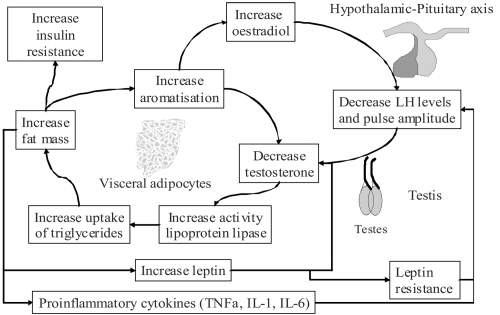Figures & data
Table 1 Definition of the metabolic syndrome
Figure 1 The hypogonadal-obesity-adipocytokine cycle hypothesis. Adipose tissue contains the enzyme aromatase which metabolises testosterone to oestrogen. This results in reduced testosterone levels, which increase the action of lipoprotein lipase and increase fat mass, thus increasing aromatisation of testosterone and completing the cycle. Visceral fat also promotes lower testosterone levels by reducing pituitary LH pulse amplitude via leptin and/or other factors. In vitro studies have shown that leptin also inhibits testosterone production directly at the testes. Visceral adiposity could also provide the link between testosterone and insulin resistance (CitationJones 2007).

Table 2 The advantages and disadvantages of available testosterone preparations with advantages and disadvantages of each